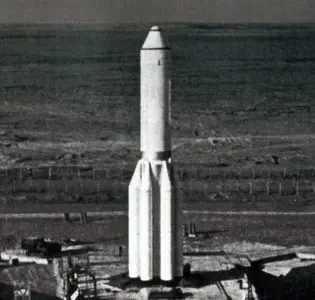Proton

Description
Proton started its life as a "super heavy ICBM". It was designed to launch a 100-megaton (or larger) thermonuclear weapon over a distance of 13,000 km. It was hugely oversized for an ICBM and was never deployed in such a capacity. It was eventually used as a space launch vehicle. It was the brainchild of Vladimir Chelomei's design bureau as a foil to Sergei Korolev's N1 rocket, whose purpose was to send a two-man Zond spacecraft around the Moon; Korolev openly opposed Proton and Chelomei's other designs for their use of toxic propellants. The unusual appearance of the first stage results from the need to transport components by rail. The central oxidizer tank is the maximum width for the loading gauge of the track. The six tanks surrounding it carry fuel and serve as the attachment points for the engines. Despite resembling strap-on boosters, they are not designed to separate from the central oxidizer tank.
Missions
4
Success Rate
75.0%
Successes
3
Failures
1
Success Streak
1
Partial Failures
0
Previous

Proton 3

N-4 n°3
Configurations

Proton
Active 1965 to 1966
Rocket
Height: 39.8m
Payload to Orbit
LEO: 12,200 kg
GTO: 0 kg
Liftoff Thrust
8,387 Kilonewtons
Fairing
Diameter: 4.15m
Height: 8.5m
Stages
2